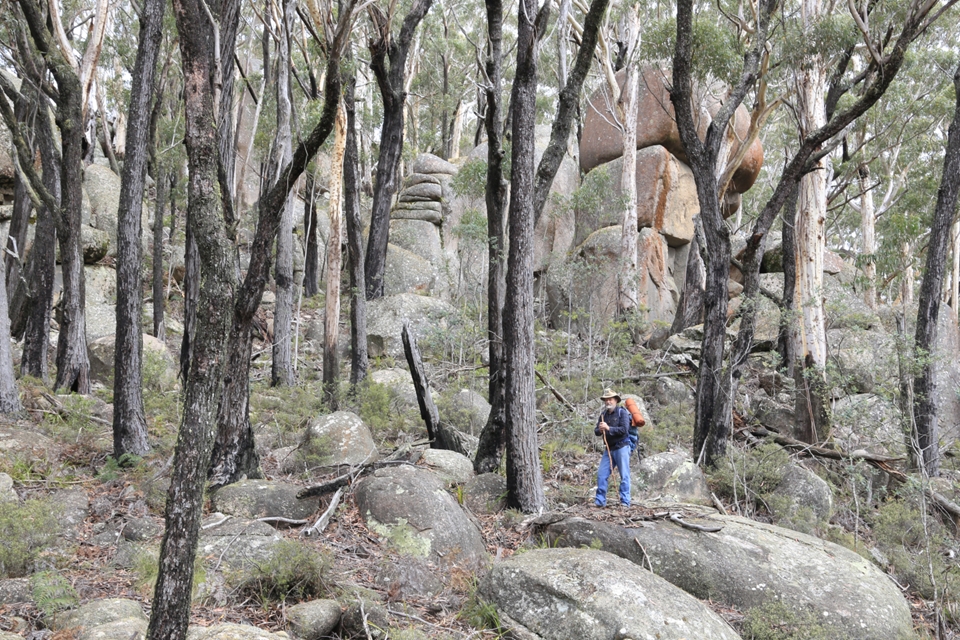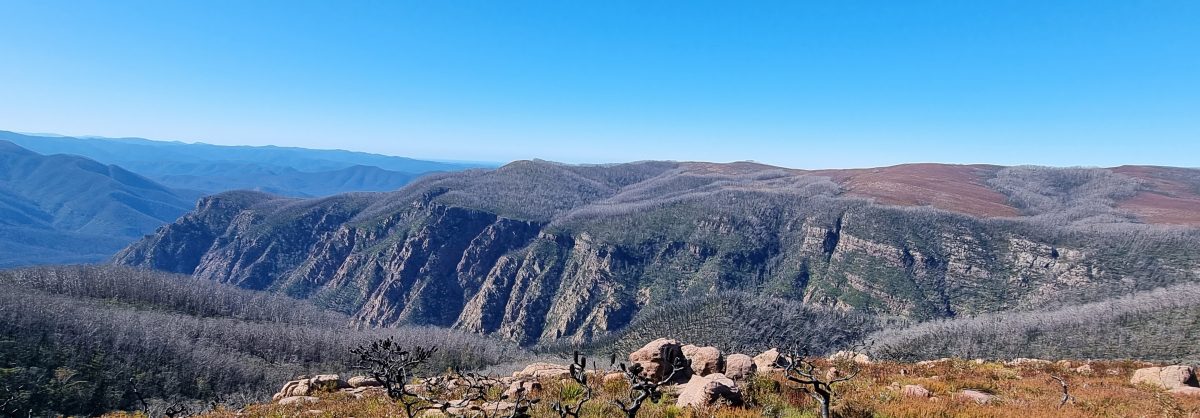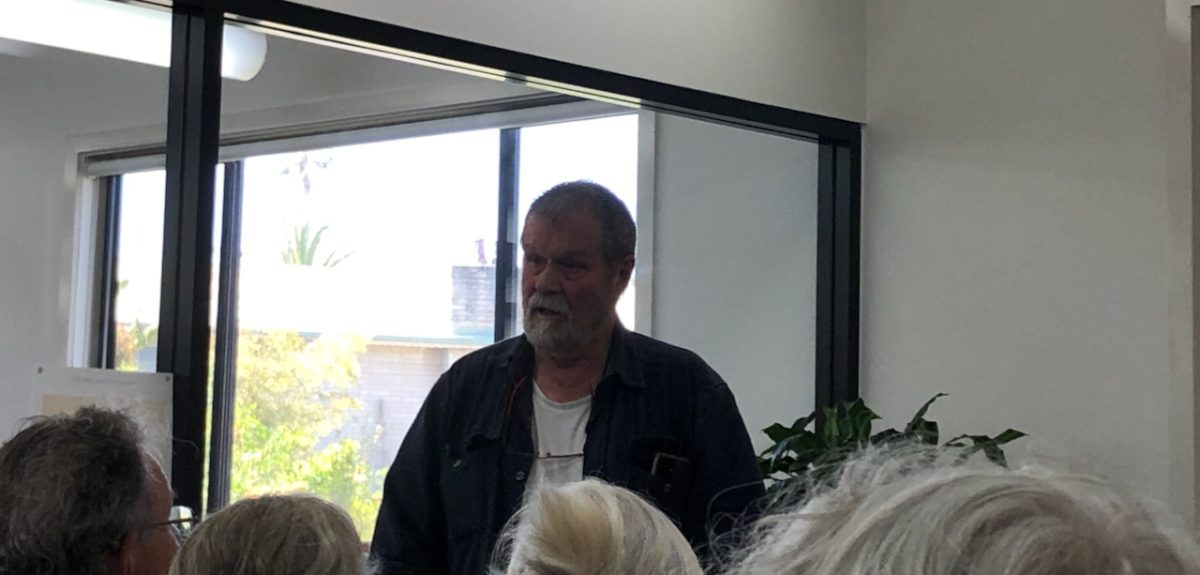
John Blay on one of his epic walks at Coolungubrah. Photo: Marion Williams.
John Blay knows more about southeast NSW than many. He has walked the area extensively, documenting its weird and wonderful secrets.
Mr Blay moved from Sydney to a spotted gum forest in Bermagui in 1970 and spent years researching the ancient Aboriginal route The Bundian Way.
Now residing in Eden, the naturalist and writer of books, poetry and dramas, spoke at Bermagui Library on Friday, 6 December about some of the amazing things he has encountered on his epic walks between Araluen and Eden. It was one of a series of talks he is giving in libraries in the southeast.
Contrary to popular belief, Mr Blay said the southeast was not a constant stream of similar forests, but more like a mosaic of many different parts.
A defining feature of the southeast are the coastal ranges which meet the Great Divide.
Mr Blay said he preferred the descriptive name that geologist W B Clarke gave the ranges in the mid-1860s.
“He called them a cordillera because they’re like a great rope, twisted and turned, snaking roughly parallel to the coast with ribs that often reach towards the ocean.”
Deua National Park contains many parts of the mosaic. One of the most beautiful things he saw was around the “intense pinkwood forest” at the head of Deua River. Nearby was “a flotilla of fallen white flowers from the mint bush” in the pools.
Mr Blay said Tabletop Mountain, near Mount Dampier, was a great place to take children to teach them about the coastal region and Gulaga. About five kilometres away, Big Badja overlooks the Monaro and the Shoalhaven River, as well as the Tuross catchment.

View from Wadbilliga over the gorge to the ocean after the Black Summer bushfires. Photo: Supplied.
There is a very rocky part of the Tuross River catchment where he found extremely rare eucalypts.
“The trees had died in the 1952 fires so I was experiencing the force of those fires 30 years on,” he said. “There was only a patch of them in Big Badja, just 20 kilometres northwest of Bermagui as the crow flies.”
He was amazed that Eucalyptus stenostoma could grow in such rocky places that get virtually no water and no apparent nutrition.
Another part of the mosaic is around Brogo where Wadbilliga Ash grow. They were very badly burnt in the Black Summer bushfires. Mr Blay said that if bushfires came too frequently now, the ash trees would not have time to seed and regenerate.
“Yet trees are hybridising all the time,” he said. “They are all changing as the climate changes, but maybe not fast enough.”
It was in the Brogo River catchment area in 1982 that Mr Blay discovered a new species of wattle more than 30 metres high which only grew there. At higher altitudes it grows as a rambling ground cover. It is named Acacia blayana in his honour.

John Blay spoke at the Bermagui Library on 6 December in one of a series of talks – “Our Wildest and Most Remote Landscapes” – he is giving at libraries in the southeast. Photo: Marion Williams.
Bega Swamp is another gem. It is only a few kilometres from Brown Mountain. “There are vast patches of grasslands with fingers of trees,” he said.
Palaeontologists examined the big peat swamp at Pipers Lookout, near Bemboka, in the 1970s. They found that eucalyptus had only grown there in recent times. “Before that, it was casuarinas, and a vegetation very similar to what you find in the high country today,” Mr Blay said.
Near Bombala, Pheasants Peak with its granite tors, is very special.
“You know you are somewhere significant when you are there,” he said. “I believe this is where the Bogong moths used to come 20,000 years ago at the peak of the recent ice age.”
Nearby is Waratah Creek, which had the highest number of arboreal mammals in the world.
Mr Blay’s talk ended with Twofold Bay in Eden in 1797 when shipwrecked sailors were trying to make their way to Sydney.
“They were too scared to go inland and figured they would stick to the coast, but it is very rare to get fresh water near the coast,” Mr Blay said.
“The local Koori people were very helpful to them. At Twofold Bay they showed travellers how to dig in the sandy creek bed to find fresh water.”







